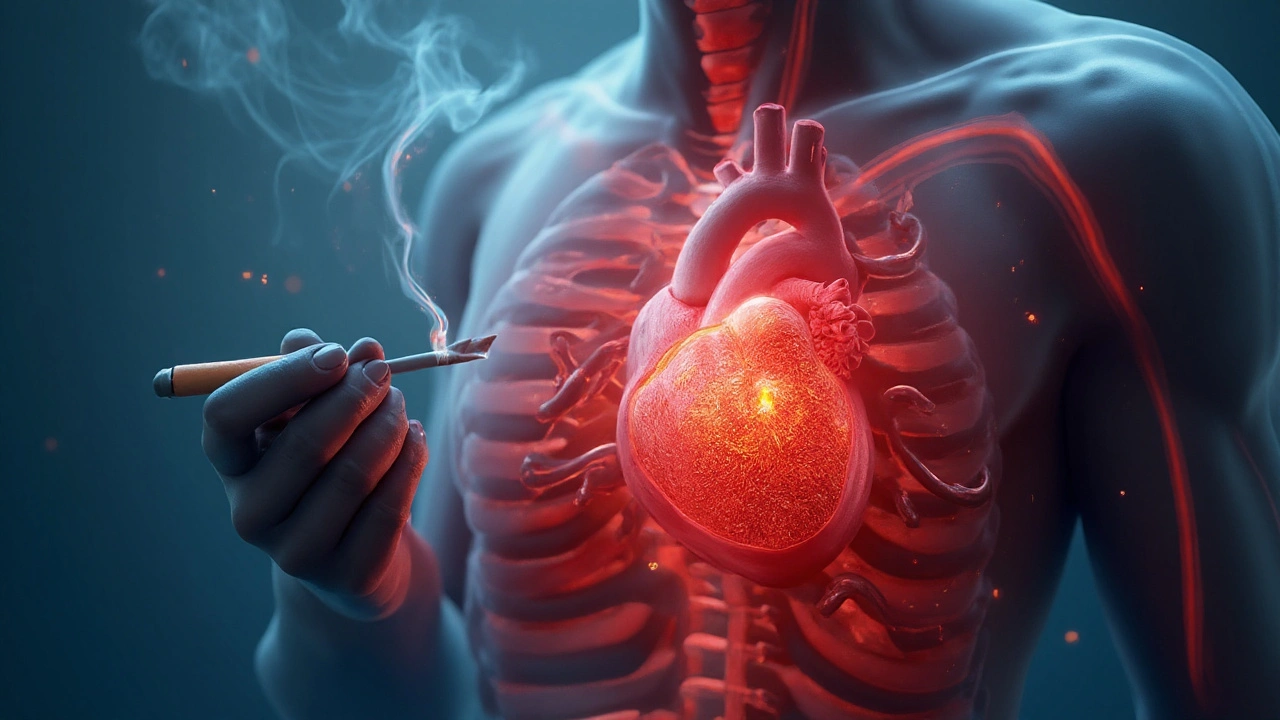If you have coronary artery disease (CAD), lighting up a cigarette isn’t just a habit—it’s a double‑whammy for your heart. Smoking narrows the arteries, adds sticky plaque, and makes blood clot faster. The result? A higher chance of heart attacks, more chest pain, and a tougher recovery after any cardiac procedure.
Even a few cigarettes a day can raise your risk. Studies show that smokers with CAD are twice as likely to have a heart attack compared to non‑smokers. The chemicals in tobacco damage the inner lining of blood vessels, turning a smooth pipe into a rough tunnel where cholesterol sticks. That’s why doctors call smoking one of the most preventable causes of heart disease.
First, nicotine spikes your heart rate and blood pressure. Your heart works harder, burning more calories and stressing the narrowed arteries. Second, carbon monoxide from smoke steals oxygen from the blood, leaving heart muscle cells starved. Third, smoking triggers inflammation, which speeds up plaque buildup. All these factors combine to make a CAD patient’s heart work overtime and become more prone to blockages.
But it’s not just the big picture. Smoking also reduces the effectiveness of many heart meds. For example, beta‑blockers and aspirin work best when you’re not constantly bombarding your system with toxins. If you keep smoking, you might need higher drug doses, and you’ll still face a higher risk of side effects.
Quitting is the gold standard, and the benefits start almost immediately. Within 20 minutes, your heart rate and blood pressure drop. After 12 hours, carbon monoxide levels normalize. Within a few weeks, circulation improves and lung function rises, making exercise easier.
If you’re not ready to quit cold turkey, try these practical moves:
Remember, every cigarette you skip is a win for your heart. Even cutting down by half can lower the risk of another heart attack by about 30%. If you’ve had a recent heart procedure, talk to your cardiologist about a tailored quitting plan—most clinics offer free counseling and medication.
Bottom line: Smoking and CAD don’t mix. The damage builds quickly, but the good news is that quitting can reverse many of the worst effects. Start small, get help, and watch your heart thank you. Your future self will breathe easier, walk farther, and enjoy a lower chance of scary heart events.

Discover how smoking drives coronary artery disease, the benefits of quitting, and proven strategies to protect your heart.
read more